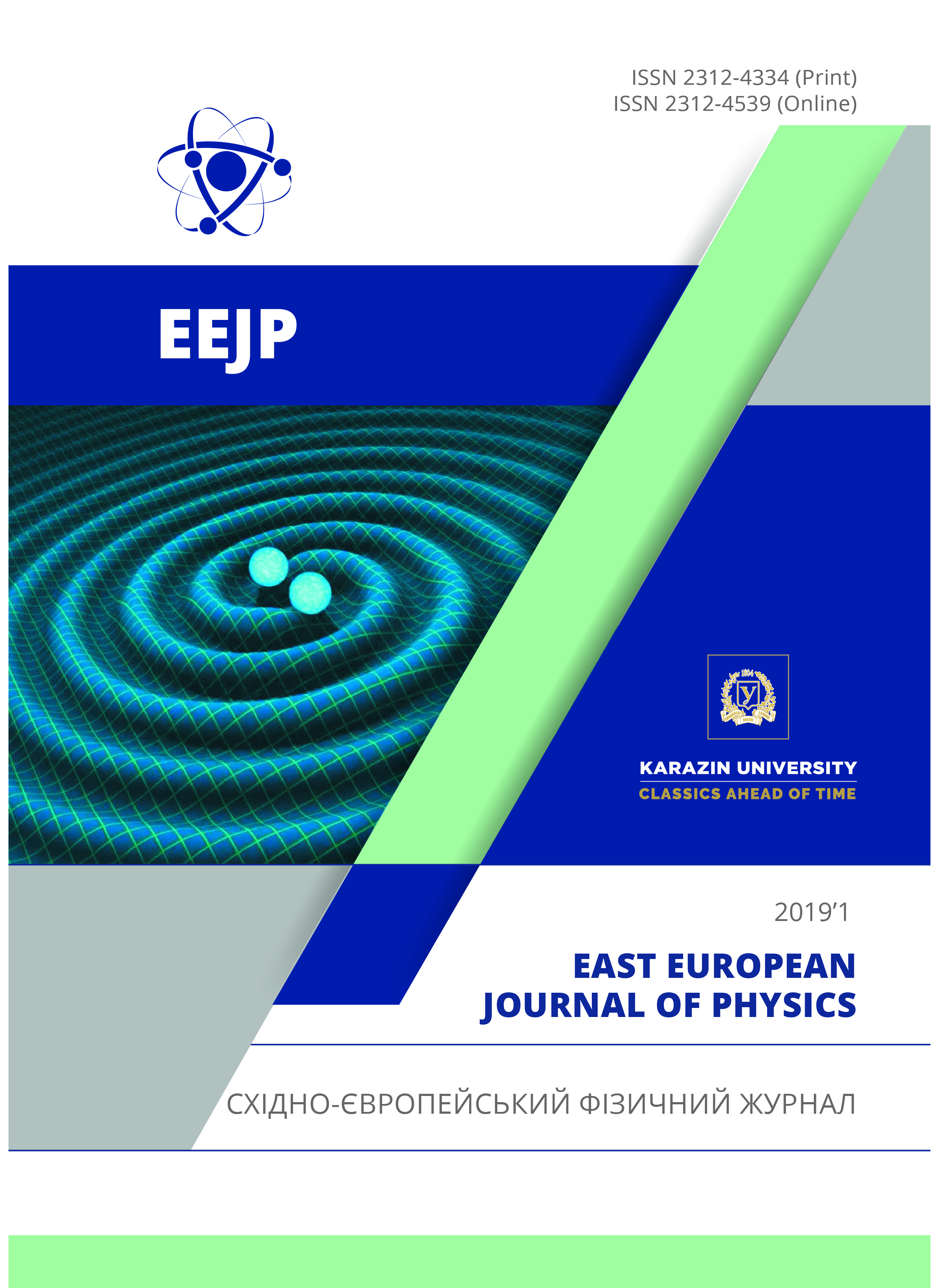Production of cc¯ and bb¯ Quark Pairs in pp Collisions at Energies of Experiments at the Large Hadron Collider
Abstract
Production of charm and beauty quark–antiquark pairs in proton–proton collisions is simulated with the codes generated in the framework of MadGraph5_aMC@NLO. The tree–level partonic processes are taken into account in first three orders of the perturbative quantum chromodynamics. The considered hard processes have two, three, and four partons in the final states. These final states contain one or two heavy quark–antiquark pairs. The calculations are performed with parton distribution functions (PDF) obtained with neural network methods by NNPDF collaboration. Influence of the multiple partonic interactions (MPI), initial– and final–state showers on the cross sections (CSs) is studied consistently taking advantage of Pythia 8 event generator. The CSs are computed in central and forward rapidity regions under conditions of the ALICE and LHCb experiments at the Large Hadron Collider at CERN. The studied transverse momentum interval of the heavy quarks spreads up to 30 GeV/c. The CSs calculated at the leading order (LO) with Pythia 8, in the tree approximation with MadGraph5, and within Fixed Order plus Next–to–Leading Logarithms (FONLL) approach agree with each other within bands of the uncertainties inherent to underlying theory and methods. Inclusion of next–to–leading order (NLO) and N2LO partonic processes into calculations in addition to LO ones results in growth of the CSs. This increase reduces to some extent discrepancies with the CSs measured by ALICE and LHCb. Variations of the CSs due to renormalization– and factorization–scale dependence are much larger than the increase of the CSs in NLO and N2LO, than the uncertainties springing in the NNPDF model, and then the accuracy achieved in the ALICE and LHCb cross section measurements. Effects of the MPI, the space– and time–like partonic showers on the heavy quark CSs are found to be not very essential.
Downloads
References
M. Cacciari, S. Frixione, N. Houdeau, M. L. Mangano, P. Nason and G. Ridolfi, J. High Energy Phys. 1210, 137 (2012), https://doi.org/10.1007/JHEP10(2012)137.
M. Cacciari, http://www.lpthe.jussieu.fr/~cacciari/fonll/fonllform.html.
J. Alwall, R. Frederix, S. Frixione, V. Hirschi, F. Maltoni, O. Mattelaer, H.-S. Shao, T. Stelzer, P. Torrielli and M. Zaro, J. High Energy Phys. 1407, 079 (2014), https://doi.org/10.1007/JHEP07(2014)079.
T. Sjöstrand, S. Ask, J. R. Christiansen, R. Corke, N. Desai, P. Ilten, S. Mrenna, S. Prestel, C.O. Rasmussen and P.Z. Skands, Comput. Phys. Commun. 191, 159 (2015), https://doi.org/10.1016/j.cpc.2015.01.024.
S. Alioli, P. Nason, C. Oleari and E. Re, J. High Energy Phys. 1006, 043 (2010) https://doi.org/10.1007/JHEP06(2010)043.
J. Bellm, S. Gieseke, D. Grellscheid, S. Plätzer, M. Rauch, C. Reuschle, P. Richardson, P. Schichtel, M. H. Seymour, A. Siódmok, A. Wilcock, N. Fischer, M. A. Harrendorf, G. Nail, A. Papaefstathiou and D. Rauch, Eur. Phys. J. C, 76, 196 (2016), https://doi.org/10.1140/epjc/s10052-016-4018-8.
T. Gleisberg, S. Hoeche, F. Krauss, M. Schonherr, S. Schumann, F. Siegert and J. Winter, J. High Energy Phys. 0902, 007 (2009).
R. D. Ball et al. (NNPDF Collaboration), J. High Energy Phys. 1504, 40 (2015), https://doi.org/10.1007/JHEP04(2015)040.
S. Acharya et al. (ALICE Collaboration), Phys. Lett. B. 788, 505 (2018), https://doi.org/10.1016/j.physletb.2018.11.009.
R. Aaij et al. (LHCb Collaboration), J. High Energy Phys. 1603, 159 (2016), Erratum: J. High Energy Phys. 1609, 013 (2016), Erratum: J. High Energy Phys. 1705, 074 (2017), https://doi.org/10.1007/JHEP03(2016)159.
R. Aaij et al. (LHCb Collaboration), Phys. Rev. Lett. 118, 052002 (2017), Erratum: Phys. Rev. Lett. 119, 169901 (2017), https://journals.aps.org/prl/abstract/10.1103/PhysRevLett.119.169901.
Authors who publish with this journal agree to the following terms:
- Authors retain copyright and grant the journal right of first publication with the work simultaneously licensed under a Creative Commons Attribution License that allows others to share the work with an acknowledgment of the work's authorship and initial publication in this journal.
- Authors are able to enter into separate, additional contractual arrangements for the non-exclusive distribution of the journal's published version of the work (e.g., post it to an institutional repository or publish it in a book), with an acknowledgment of its initial publication in this journal.
- Authors are permitted and encouraged to post their work online (e.g., in institutional repositories or on their website) prior to and during the submission process, as it can lead to productive exchanges, as well as earlier and greater citation of published work (See The Effect of Open Access).








